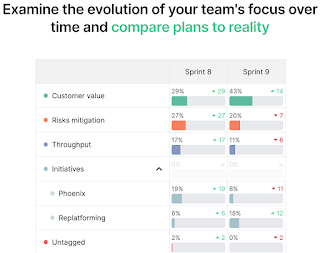
TL; DR (too long; didn't read)
Your issue is communications, not "the decision making process."
Decisions and Decision Making receive an enormous amount of attention among managers in the global 5,000 largest companies. Many processes, paradigms, job aids, tools, articles, case studies, patterns, & practices are researched, taught, applied, and evolved to overcome "problems in the decision making process" at organizations. From
responsibility assignment matrices to the
neuroscience of decision making, studies and analysis of decision making produces petabytes of wisdom and thousands of column inches of Harvard Business Review (HBR) studies.
Old "models" that are new again continually fail to solve underlying issues and group dynamics of the people and teams affected by, or involved in business decisions. There is even a
society of decision professionals whose careers revolve around helping others make decisions and that try to "repair" others' decision making processes. The large majority of issues perceived as caused by "the decision making process" are not associated with decisions or the process.
Solving any problem normally involves a decision about what changes will be made as part of the solution. Frequently, many others will be affected by such changes. When a decision is identified, a number of others affected by the outcome are unaware the decision owner will or has already made a decision. Those affected are blindsided by the changes and confused how and why the changes were made. Issues in "decision making" start with discovering that someone or a team is or will soon be making a decision that materially affects others. Once the decision owner or participants realize(s) there is a decision that affects others she can go about identifying who all will be affected, as well as what all communication is needed. But there remain problems of effectively communicating with everyone impacted.
Thrashing (wasted work)

As
the Poppendiecks explained when they invented
Lean Software Development, the worst impediment to rapid, high value delivery in software development is waste. And the largest source of waste is
partially done work. Poor communications about decisions contributes enormously to unplanned changes, which, in turn, results in partially done work (thrashing).
Instead of concentrating on decision quality or decision process, we should frame issues and solutions as
communication. This focus will lead to less friction, better behaviors, and better outcomes. Managing behaviors and process changes is always painful and difficult in organizations. Concentrating on changes associated exclusively with communication will go a longer way in solving problems in "the decision making process" that are in reality issues in communication surrounding decisions.
The first person with whom the decision owner must communicate is herself. She must first surface the fact to herself that she is making a decision that will affect others and consider if and how to communicate this discovery to each person affected. Then she can execute whichever "decision making process" her organization prescribes that is appropriate to the impact of her decision and type of decision. She could, for example, start with identifying audiences and members of
a responsibility assignment matrix associated with the decision she discovered she is making.
In some situations, decisions are pushed down to the person and team with the most context; leaders are content to be "informed" of how their teams have chosen to accomplish a result instead of pulling decision ownership up to HIPPOs (higher paid people in the org). In these cases, clear accountability for the success of a decision should also be delegated. (Success has many parents but Failure is an orphan). It is imperative that a decision owner understands who all her decision will affect and the consequences; such an understanding is difficult in large organizations; therefore stakeholders must be very
proactive in communicating this context.

In other situations there is a top-down hierarchical command and control culture, where most decisions float up to HIPPOs, decision criteria are often less-technical and more business-oriented. In such circumstances, technical folks are tasked to communicate the context, desired outcomes and acceptable tradeoffs (collateral damage) of a decision to leaders using concerns and language the HIPPO understands. The vision for how a decision will lead to the desired result, as well as a clear measurement for success must be part of the decision's communication.
In the second half of this blog post we shall cover a checklist to consider associated with your decision as well as how to craft communication persuasively to your audiences.























